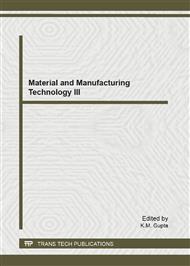p.833
p.839
p.843
p.848
p.853
p.860
p.865
p.870
p.875
Numerical Investigations of Solid-Liquid Two-Phase Turbulent Flows through Francis Turbine
Abstract:
This work is to investigate solid-liquid flows inside entire passage of a large Francis turbine unit and a modified algebraic model is proposed to take the solid-phase turbulent viscosity into consideration based on realizable turbulence model for the liquid phase and further development of the commercial CFD software. The energy conversion between the pressure and velocity, and the sedimentation distribution characteristics around all the hydraulic parts are simulated. The calculated velocity and sedimentation concentration distributions inside the runner are not uniform due to the effect of the centrifugal and Coriolis force. In addition, the calculated eccentric vortex rope in the draft tube causes vortex cavitation and vibration to the turbine unit, which leads to the eccentric sedimentation distribution. The simulation results (i.e., the mixture pressure, velocity and sedimentation distributions) are in good agreement with the natural rule, suggesting that the simulation strategies are capable to handle two-phase flows over complex geometries. The computational results can provide the useful information for hydraulic turbine designs. Future work will focus on the optimizations of hydraulic impeller designs using simulated results.
Info:
Periodical:
Pages:
853-859
Citation:
Online since:
July 2012
Authors:
Price:
Сopyright:
© 2012 Trans Tech Publications Ltd. All Rights Reserved
Share:
Citation:


